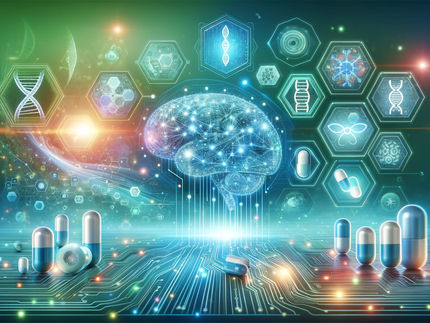Power at sea: towards high-performance seawater batteries
Scientists develop an efficient synthesis route to produce a novel co-doped anode material for rechargeable seawater batteries
Lithium-ion batteries have taken the world by storm thanks to their remarkable properties. However, the scarcity and high cost of lithium has led researchers to look for alternative types of rechargeable batteries made using more abundant materials, such as sodium. One particularly promising type of sodium-based battery is seawater batteries (SWBs), which use seawater as the cathode.
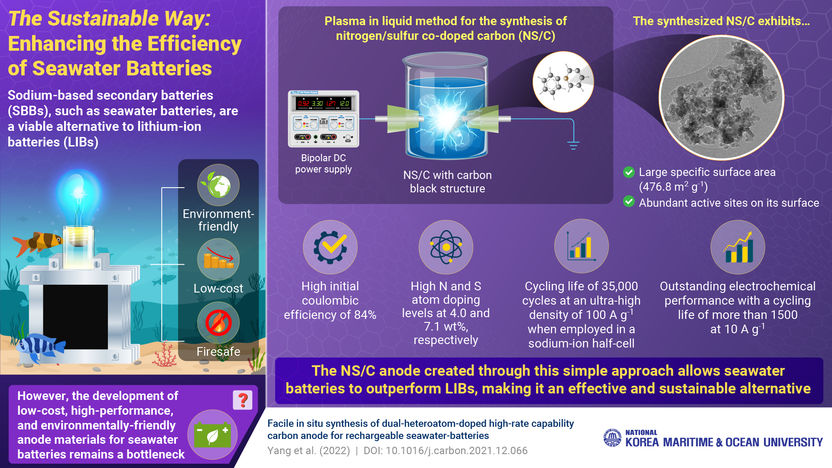
Scientists develop an efficient synthesis route to produce a novel co-doped anode material for rechargeable seawater batteries
National Korea Maritime & Ocean University
Though SWBs are environmentally benign and naturally firesafe, the development of high-performance anode materials at a reasonable cost remains a major bottleneck that prevents commercialization. Traditional carbon-based materials are an attractive and cost-efficient option, but they have to be co-doped with multiple elements, such as nitrogen (N) and sulfur (S), to boost their performance up to par. Unfortunately, currently known synthesis routes for co-doping are complex, potentially dangerous, and don’t even yield acceptable doping levels.
In a recent study, a team of scientists from Korea Maritime and Ocean University led by Associate Professor Jun Kang have found a way out of this conundrum. Their paper, which was made available online on December 22, 2021 and published in Volume 189 of Carbon on April 15, 2022, describes a novel synthesis route to obtain N/S co-doped carbon for SWB anodes.
Termed ‘plasma in liquid,’ their procedure involves preparing a mixture of precursors containing carbon, N, and S and discharging plasma into the solution. The result is a material with high doping levels of N and S with a structural backbone of carbon black. As proved through various experiments, this material showed great potential for SWBs, as Dr. Kang remarks: “The co-doped anode material we prepared exhibited remarkable electrochemical performance in SWBs, with a cycling life of more than 1500 cycles at a current density of 10 A/g.”
The potential maritime applications of SWBs are many, since they can be safely operated while completely submerged in seawater. They can be used to supply emergency power in coastal nuclear power plants, which is difficult when using conventional diesel generators in the event of a disastrous tsunami. Additionally, they can be installed on buoys to aid in navigation and fishing. Perhaps most importantly, SWBs could be literally life-saving, as Dr. Kang explains: “SWBs can be installed as a power source for salvage equipment on passenger ships. They would not only supply a higher energy density than conventional primary batteries, but also enable stable operation in water, thereby increasing survival probabilities.”
Overall, this novel synthesis method for co-doped carbon anodes might just be the answer we need to make SWBs reach new heights!
Original publication
Other news from the department science

Get the chemical industry in your inbox
By submitting this form you agree that LUMITOS AG will send you the newsletter(s) selected above by email. Your data will not be passed on to third parties. Your data will be stored and processed in accordance with our data protection regulations. LUMITOS may contact you by email for the purpose of advertising or market and opinion surveys. You can revoke your consent at any time without giving reasons to LUMITOS AG, Ernst-Augustin-Str. 2, 12489 Berlin, Germany or by e-mail at revoke@lumitos.com with effect for the future. In addition, each email contains a link to unsubscribe from the corresponding newsletter.
Most read news
More news from our other portals
See the theme worlds for related content
Topic World Battery Technology
The topic world Battery Technology combines relevant knowledge in a unique way. Here you will find everything about suppliers and their products, webinars, white papers, catalogs and brochures.
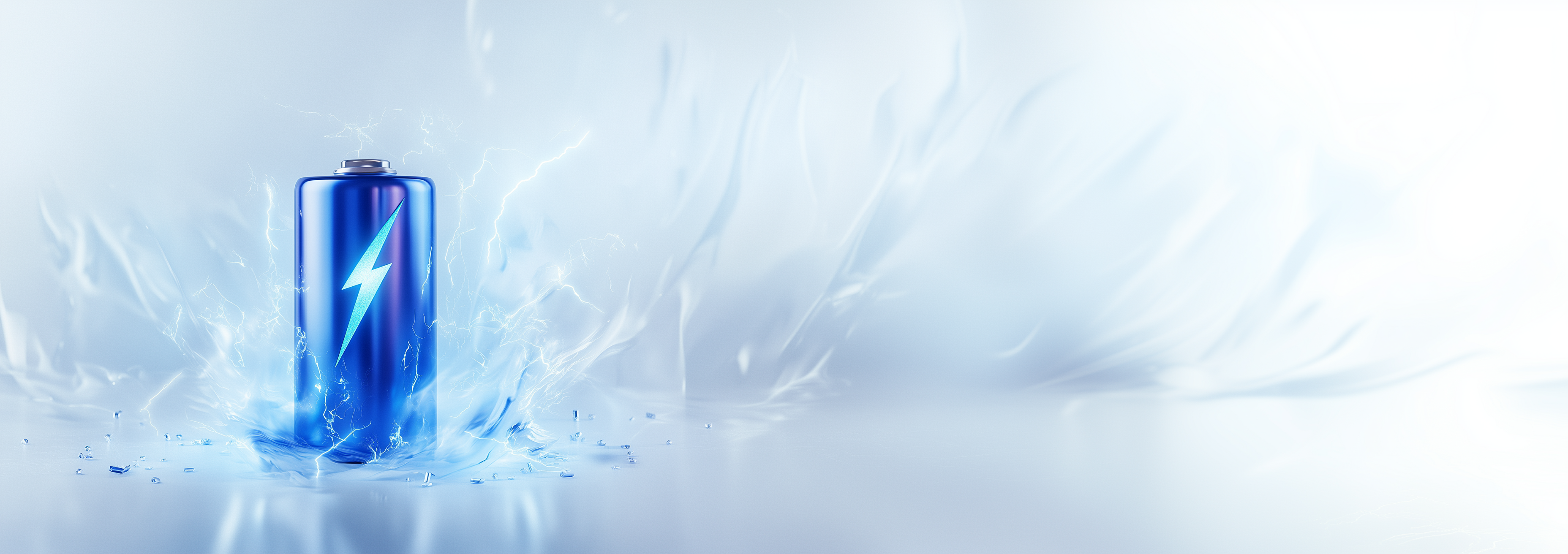
Topic World Battery Technology
The topic world Battery Technology combines relevant knowledge in a unique way. Here you will find everything about suppliers and their products, webinars, white papers, catalogs and brochures.
Topic world Synthesis
Chemical synthesis is at the heart of modern chemistry and enables the targeted production of molecules with specific properties. By combining starting materials in defined reaction conditions, chemists can create a wide range of compounds, from simple molecules to complex active ingredients.
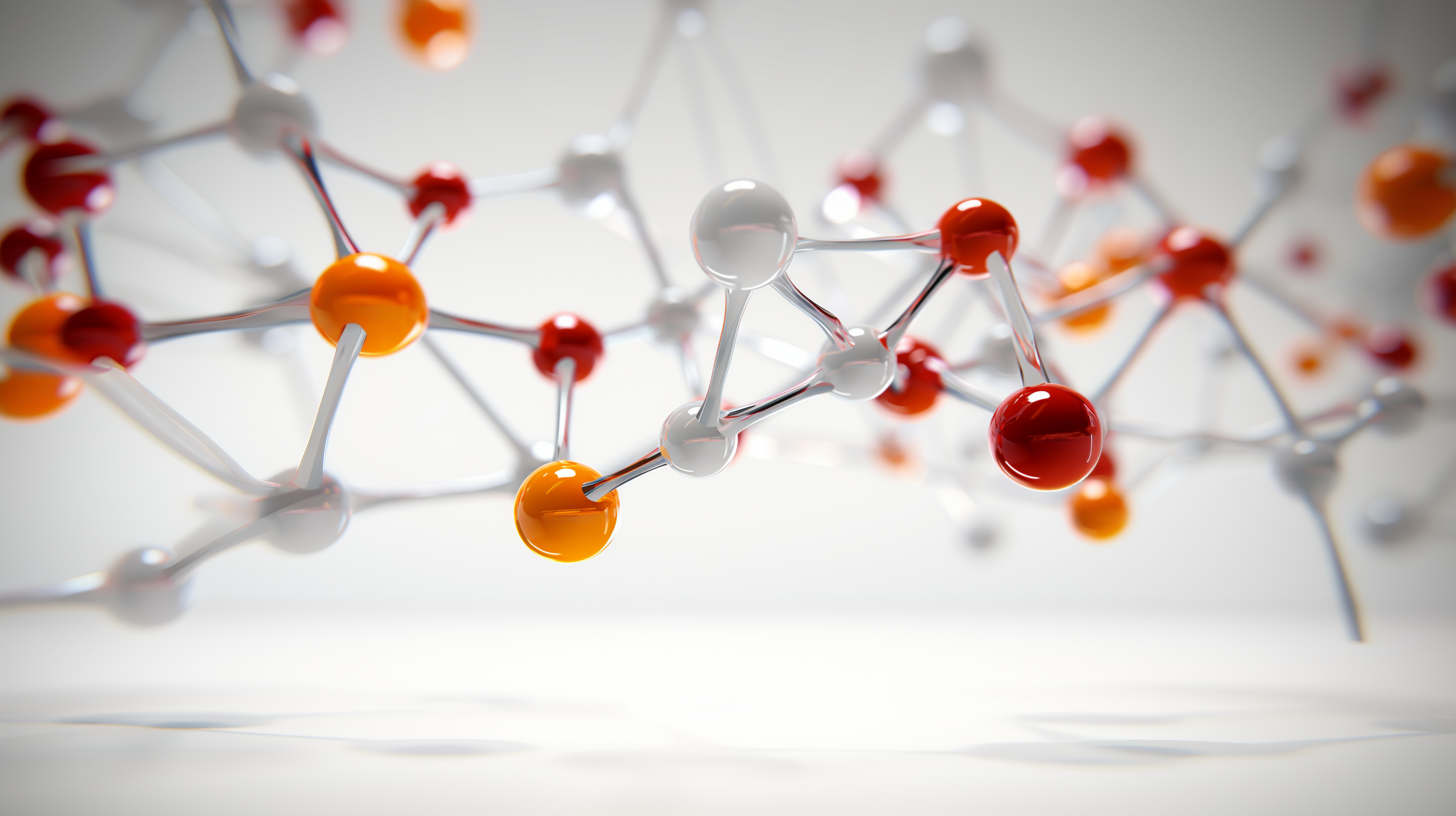
Topic world Synthesis
Chemical synthesis is at the heart of modern chemistry and enables the targeted production of molecules with specific properties. By combining starting materials in defined reaction conditions, chemists can create a wide range of compounds, from simple molecules to complex active ingredients.
Last viewed contents
State-of-the-art polyolefin logistics centre reinforces SABIC’s long-term commitment to serving its UK customers

Green methanol for shipping and industry: € 10.4 Mio. for the "Leuna100" project - A consortium of two Fraunhofer institutes, DBI-Gastechnologisches Institut Freiberg, Technical University of Berlin and C1 makes industrial history at the Leuna site
William_Justin_Kroll
Robert_Kane_(chemist)
Dow Corning Expands Central & Eastern Europe Operations - Warsaw Office to Help Eastern European Businesses Innovate and Grow
Category:Nobel_laureates_in_Chemistry
Sodium_silicate

It’s all about the sausage - Choosing the right proteins can improve the mouthfeel of vegetarian sausages
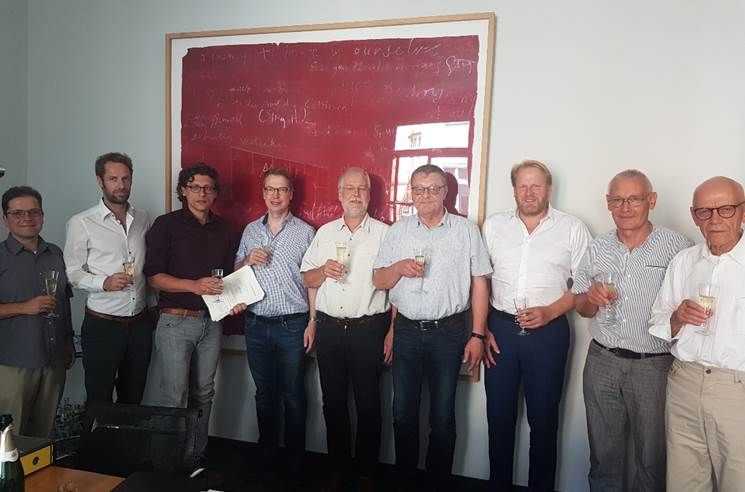
SOPAT acquires Parsum
DuPont
Benign_familial_neonatal_convulsions

